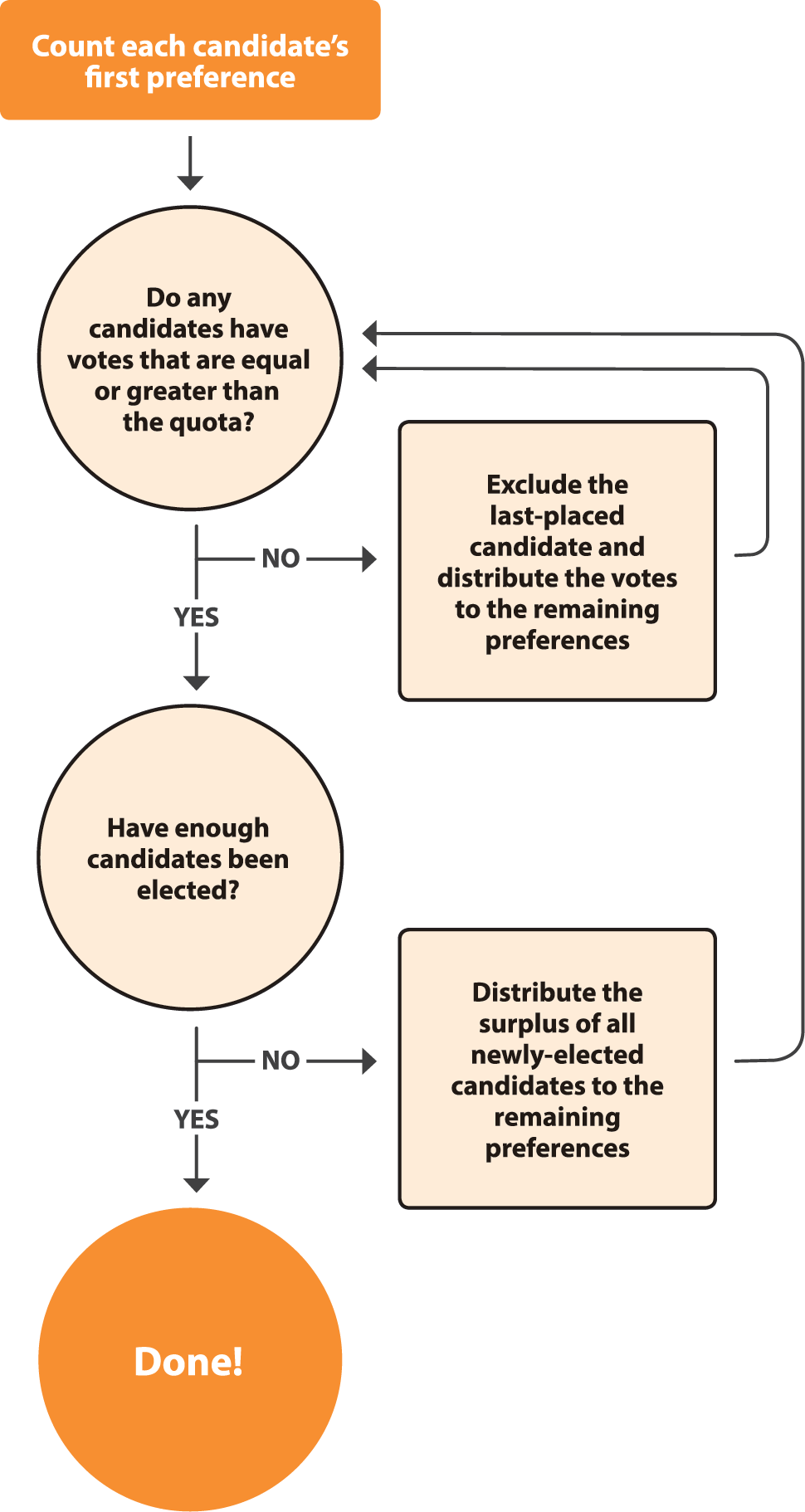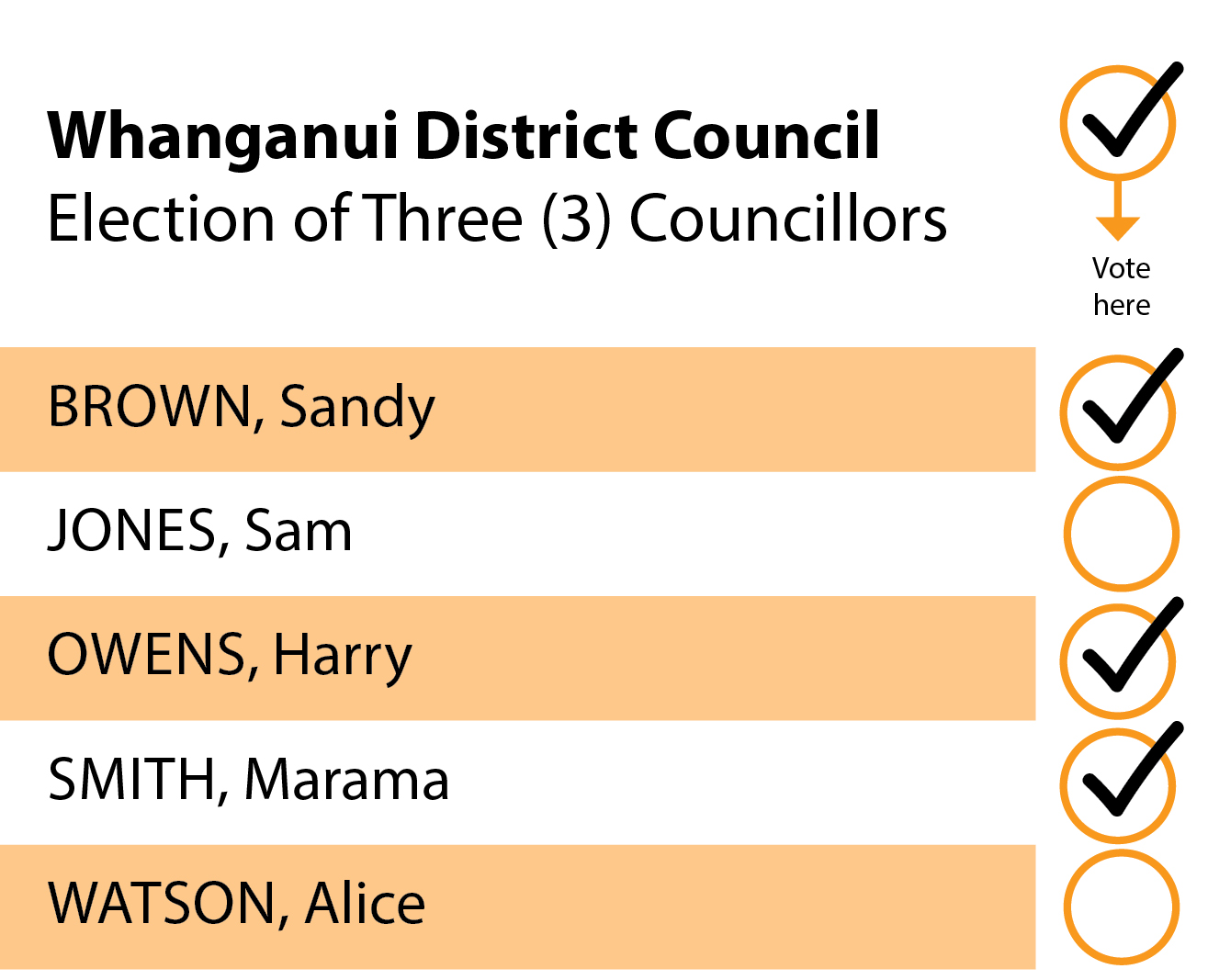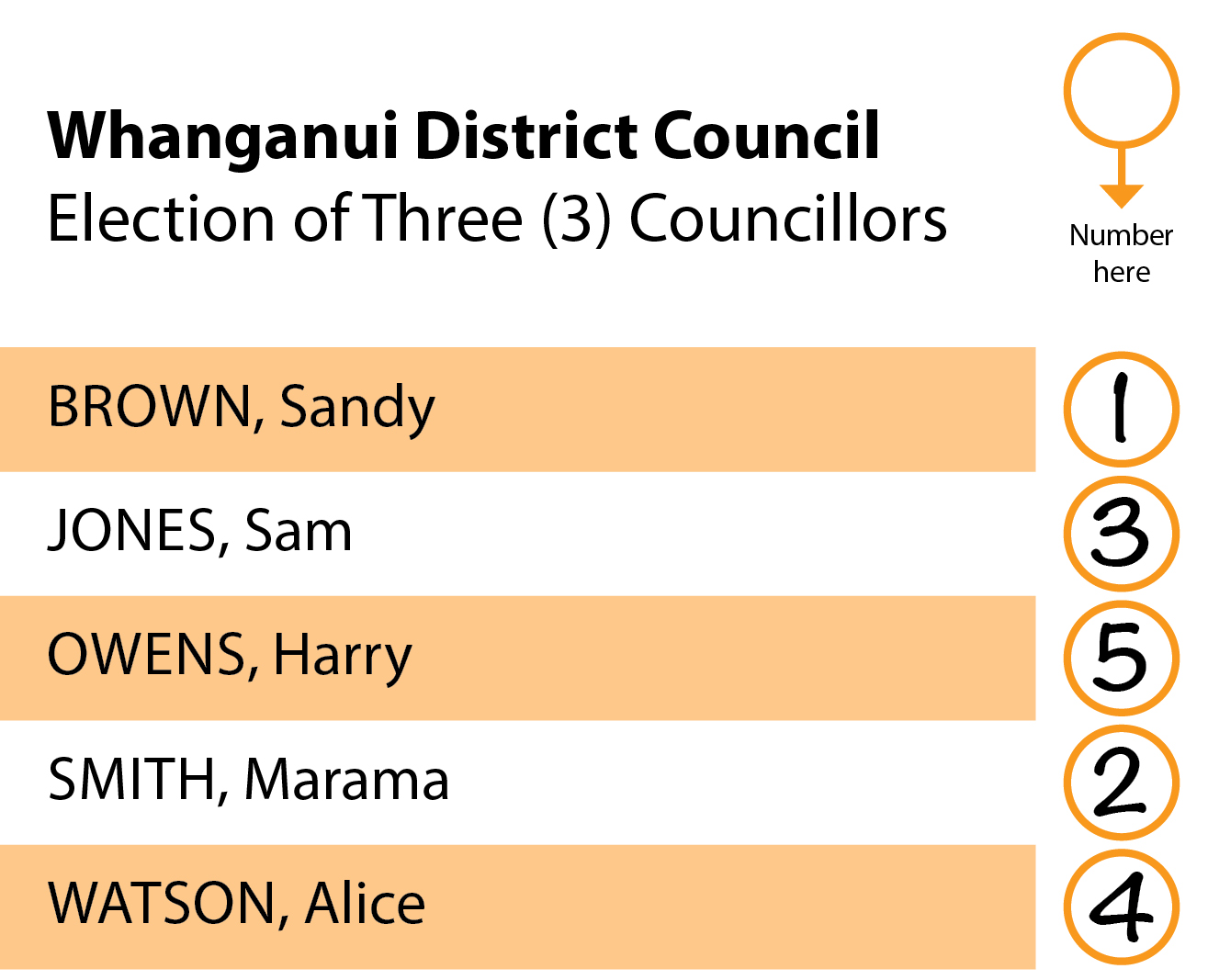What you will be voting for
This local authority triennial election, you will be asked to elect representatives for Whanganui District Council and Whanganui District Health Board. You will be also asked questions on what voting systems we should use in future in Whanganui.
Whanganui District Council vote
Whanganui District Council comprises one Mayor and 12 councillors. The current Mayor Hamish McDouall was the only nominee for the mayoralty, so he has been elected unopposed. Therefore, you will be asked to vote for 12 councillor candidates only.
The Council vote uses the First Past the Post (FPP) voting system where you tick the name of the candidate/s you most prefer. When the votes are counted, the candidate/s with the most votes is/are elected.
Whanganui District Health Board vote
The Whanganui District Health Board group makes decisions about health and disability services in our area. This vote uses the Single Transferable Vote (STV) voting system. With STV you rank the candidates with numbers based on your preference. Put a 1 next to the candidate you most want to win, a 2 next to your next favourite, then a 3 for the next person and so on. You don't have to rank every candidate – your vote is still valid even if you only rank some candidates.
What about the Whanganui Rural Community Board and Horizons Regional Council?
All candidates for both Whanganui Rural Community Board and Whanganui seats for Horizons Regional Council have been elected unopposed. Therefore, you will not be asked to vote for these candidates in this election.
Polls
You will be also asked three questions on what voting systems we should use in future in Whanganui and the number of councillors:
- The electoral system to be used – do you want to elect candidates using the First Past the Post electoral system, or the Single Transferable Vote system? This vote is binding.
- The basis of election – do you want to elect candidates based on a ward system, or do you want them to stand 'at large' (across the whole district)? This vote is non-binding
- The number of councillors - do you want to keep the number of Whanganui district councillors at 12, or do you want to reduce the number to 10? This vote is non-binding.
We've summarised each of the three poll questions below, but we encourage you to do some research, too. See what others have to say in order to get a good understanding of the arguments for and against each proposal.
Electoral system
First Past the Post (FPP)
When you vote in an FPP election you tick the name of the candidate/s you most prefer. When the votes are counted, the candidate/s with the most votes is/are elected.
Single transferable Vote (STV)
When you vote in an STV election, you rank the candidates in your order of preference. You write "1" next to the name of the candidate you most prefer, "2" next to your second choice, and so on.
When votes are counted, all the first preferences (the "1"s) are allocated first. To be elected a candidate must reach a "quota" of votes, which is based on the number of vacancies and the number of valid votes.
A candidate who reaches the quota is elected. If there is more than one vacancy and a candidate gets more votes than the quota, a proportion of each vote for that candidate is transferred to the voter's second preference. If this results in another candidate getting more votes than the quota, a proportion is transferred to the third preference, and so on.
How STV votes are calculated

If insufficient candidates reach the quota after the first preferences are allocated, and after any surplus votes are transferred, then the candidate who received the fewest votes is eliminated and each vote for that candidate is transferred to the voter's second preference. This process is repeated until enough candidates reach the quota to fill all the vacancies.
Here's what the different voting papers might look like:
First Past the Post (FPP)

Single transferable Vote (STV):

Basis of election
'Wards' are voting areas. They can cover a geographic area, e.g. the Manukau Ward in Auckland, or a particular group, e.g. Māori wards.
Voting 'at large' means all candidates are elected by the whole area. Some councils have a voting system based on a mix of wards and 'at large'.
The Council can consider a ward or mixed system, but will need to consult the community before any changes are introduced.
Number of councillors
The Local Electoral Act states that the governing body of a territorial authority (such as Whanganui District) should be between six and 30 members – including the Mayor. This means we can have between 5 and 29 councillors.
The pool of money for salaries, which is set by the Remuneration Authority, remains the same, regardless of the number elected to the Council – it is just to be divided between the members. So, if there are more members, they each receive less. If there are fewer members, they each receive more.
There could be some minor administrative cost savings if there were fewer members.